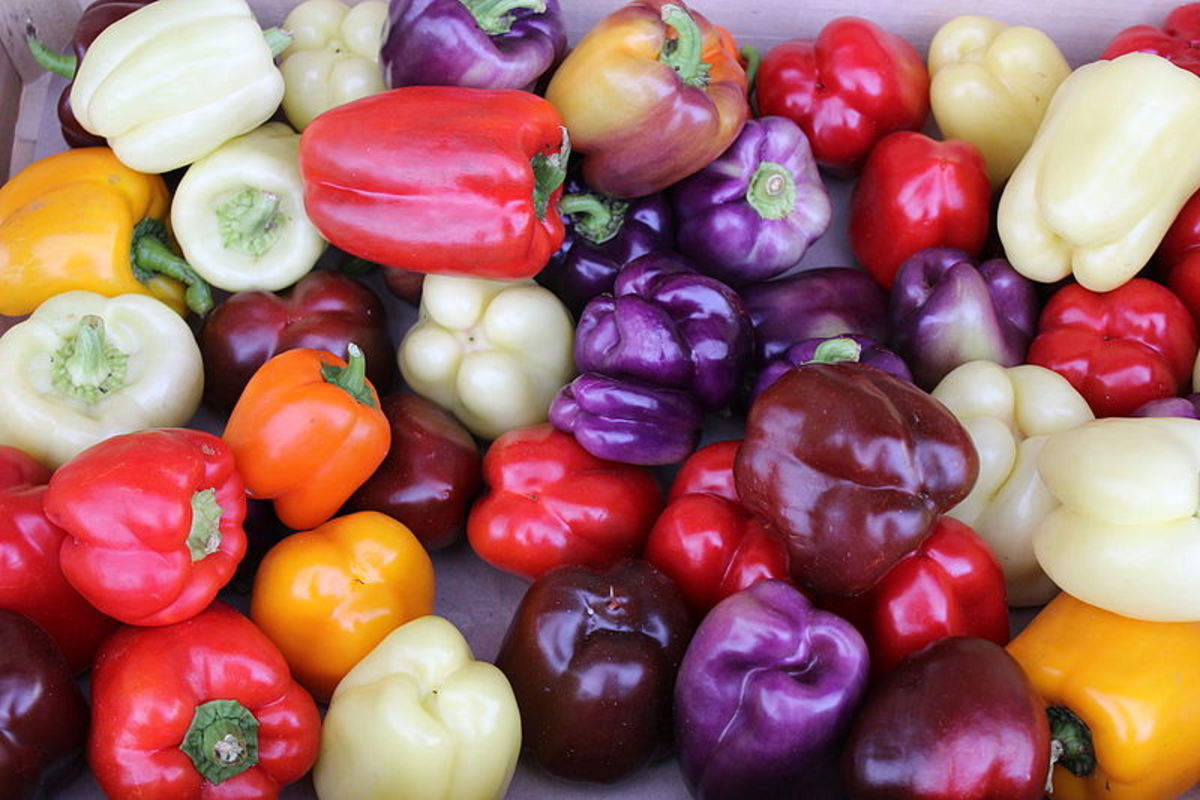Have you ever wondered why bell peppers come in different colors? The answer is actually quite simple. Peppers get their color from the carotenoids they contain.
Carotenoids are found in many fruits and vegetables, and they range in color from yellow to orange to red. Bell peppers can have any of these colors because they contain all of the carotenoids. The amount of each carotenoid determines the pepper’s final color.
For example, a pepper with more lycopene will be red, while one with more beta-carotene will be yellow or orange.
There are a variety of reasons why peppers may be different colors. For example, some peppers are bred to be a certain color, such as orange or yellow. Additionally, the ripeness of the pepper can affect its color.
For instance, unripe peppers are usually green, while ripe peppers are typically red or purple. Finally, the environment in which the pepper is grown can also impact its hue. For example, if a pepper is grown in direct sunlight, it is more likely to be a brighter color than one that was grown in shade.
Are Red Peppers And Green Peppers the Same Plant
Are red peppers and green peppers the same plant? The answer is yes, they are! Both red and green peppers are actually the fruit of a plant in the nightshade family called Capsicum annuum.
The difference in color is simply due to when they are harvested – red peppers are left on the vine longer to ripen, while green peppers are picked early.

Credit: delishably.com
What Causes Bell Peppers to Change Colors?
Bell peppers change color as they mature. The most common colors are green, red, and yellow. The color of a bell pepper is determined by the presence of carotenoids.
Carotenoids are plant pigments that give fruits and vegetables their characteristic colors. Green bell peppers have high levels of chlorophyll, which masks the carotenoids. As bell peppers mature and their chlorophyll levels decline, the carotenoids become visible and the peppers change color.
Red bell peppers have the highest levels of carotenoids among all the colors. In addition to providing color, these compounds also have health benefits. Carotenoids are antioxidants that can help protect cells from damage and may boost immunity.
They’ve also been linked to lower risks of certain cancers and eye diseases.
Yellow bell peppers contain moderate amounts of carotenoids, while orange bells have even less. However, all colors of bell pepper are an excellent source of vitamins A and C, two nutrients that are important for maintaining good health.
Which Color Bell Pepper is the Healthiest?
Red bell peppers are the healthiest color of bell pepper. They contain the most vitamins and antioxidants of all the colors. Red bell peppers are a good source of vitamins A, C, and B6.
They also contain lycopene, which is an antioxidant that has been linked to several health benefits.
Are Green Red And Yellow Bell Peppers the Same Plant?
No, green, red and yellow bell peppers are not the same plant. They are all members of the species Capsicum annuum, but they are different cultivars, or varieties. Cultivars are plants that have been selected and bred to have certain desirable characteristics.
In the case of bell peppers, the different colors indicate different stages of ripeness. Green bell peppers are unripe fruit, while red and yellow bell peppers are ripe fruit.
Is There a Difference between Colors of Peppers?
When it comes to peppers, there is indeed a difference between the colors! For example, red peppers are typically sweeter than green peppers, while yellow and orange peppers tend to be somewhere in between the two in terms of sweetness. In terms of heat, however, it is generally the case that the darker the pepper, the hotter it will be – so a black pepper would likely pack more of a punch than a white one.
Of course, there are always exceptions to these general rules – after all, every pepper is different. But if you’re looking for a certain flavor or level of heat in your dish, knowing which color of pepper to use can definitely be helpful. So next time you’re at the grocery store perusing the produce section, don’t just grab any old bag of peppers – think about what you want to make and choose accordingly!
Conclusion
Different colored peppers are the result of different genes that produce different pigments. The most common colors of peppers are green, red, and yellow, but there are also white, purple, and black peppers. The color of a pepper is determined by the concentration of carotenoids in the fruit.
Carotenoids are a type of pigment that gives plants their characteristic colors. Green peppers have the lowest concentration of carotenoids, while red peppers have the highest concentration. Yellow and orange peppers fall somewhere in between.
White and purple peppers do not contain any carotenoids at all; their color is due to other pigments present in the fruit. Black pepper is made up of both carotenoids and other pigments.
